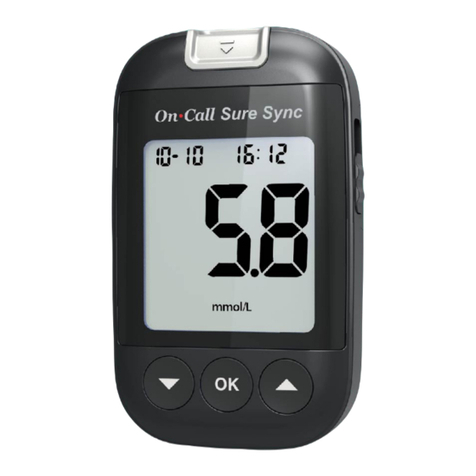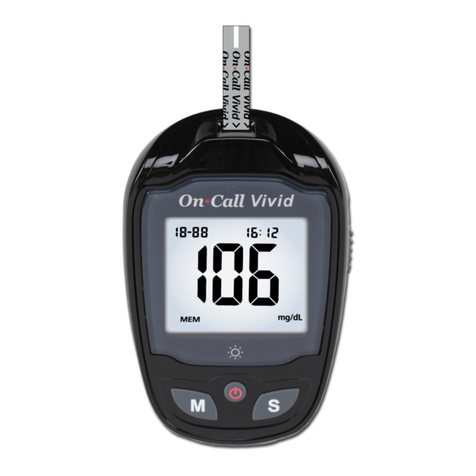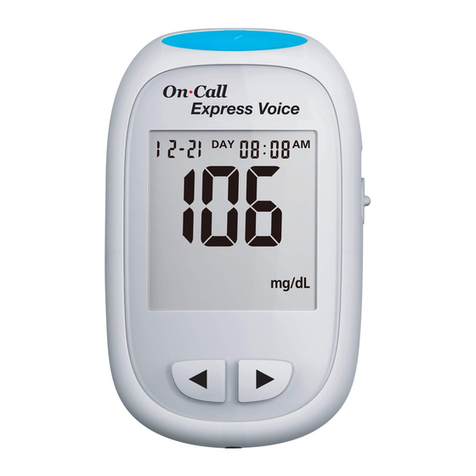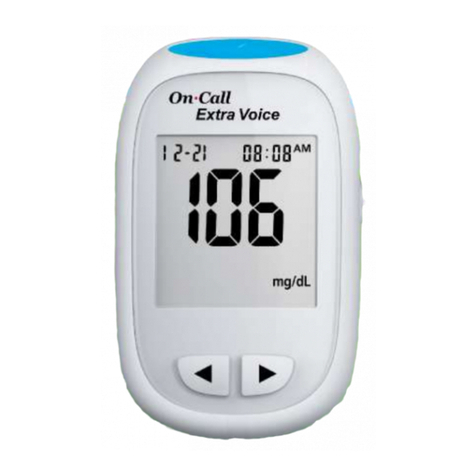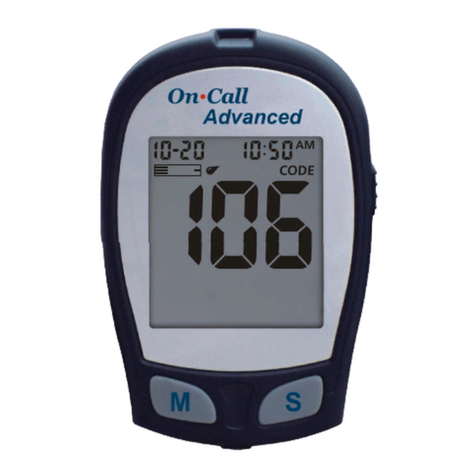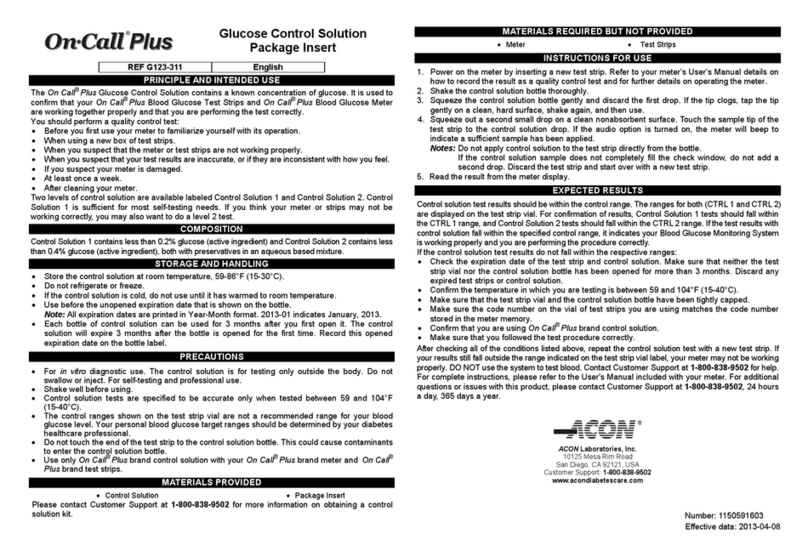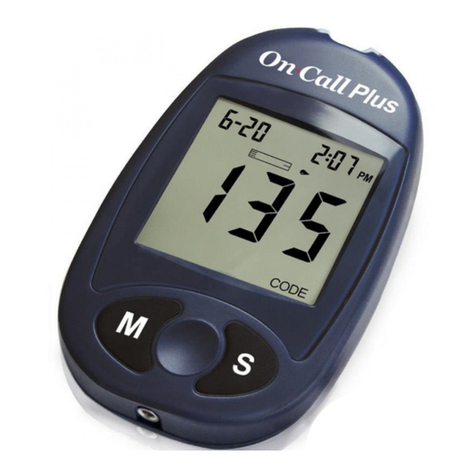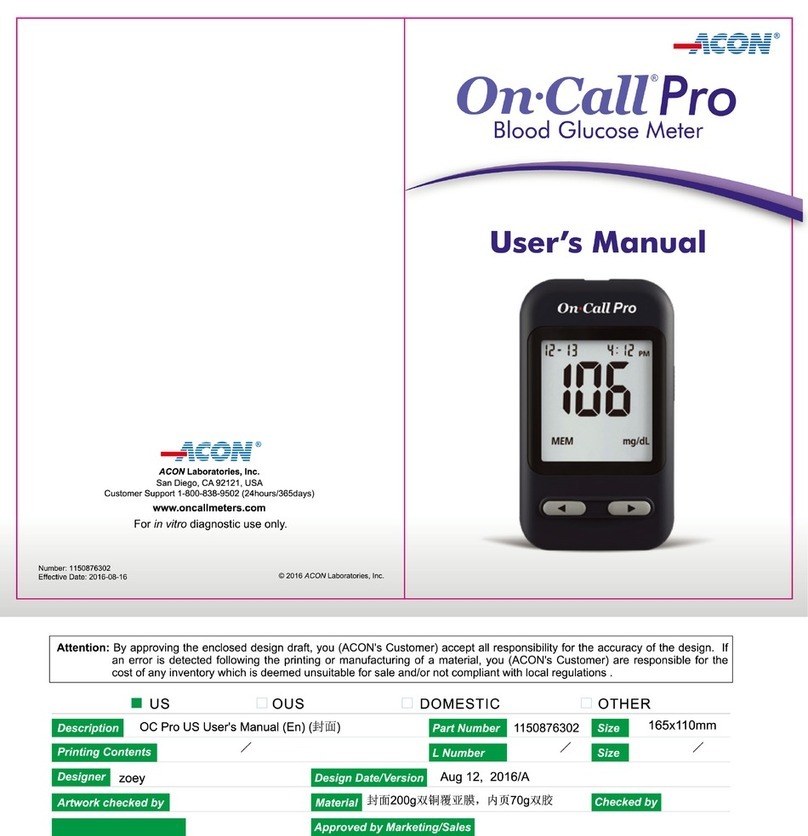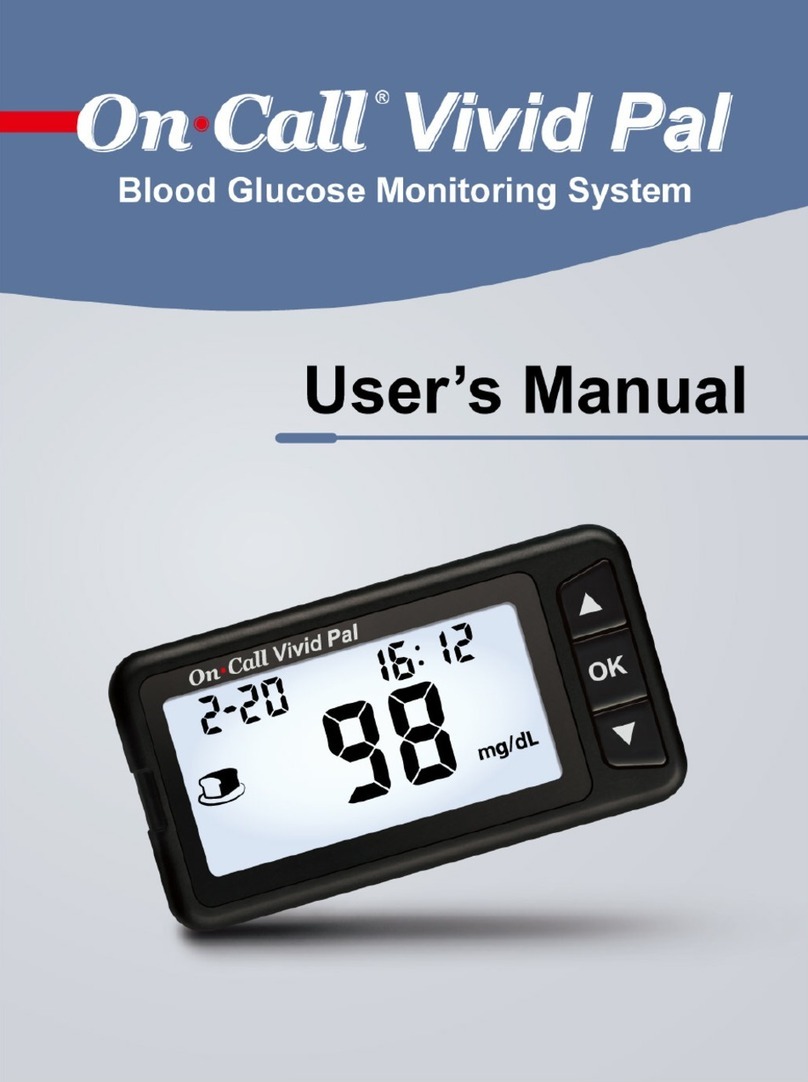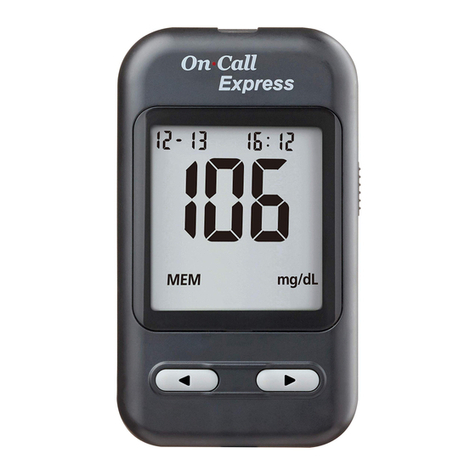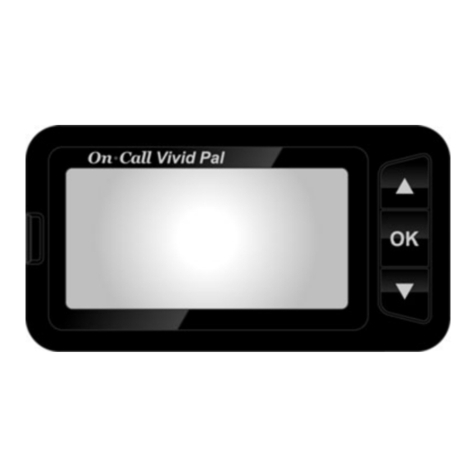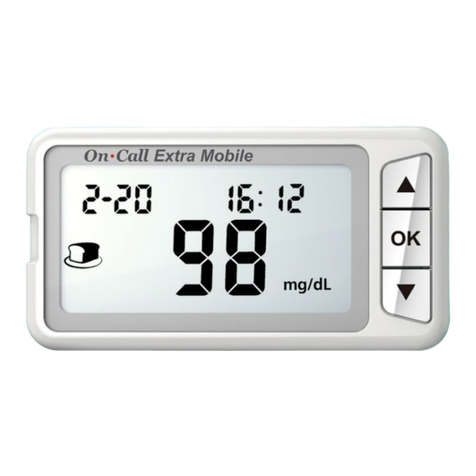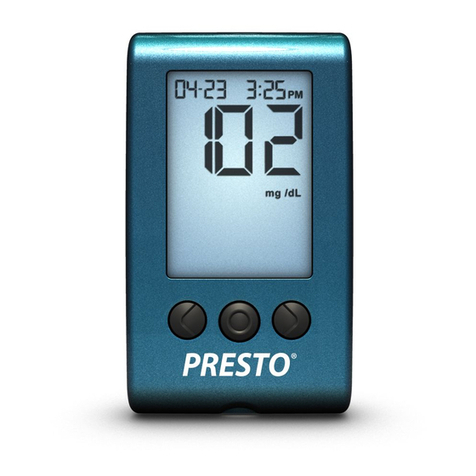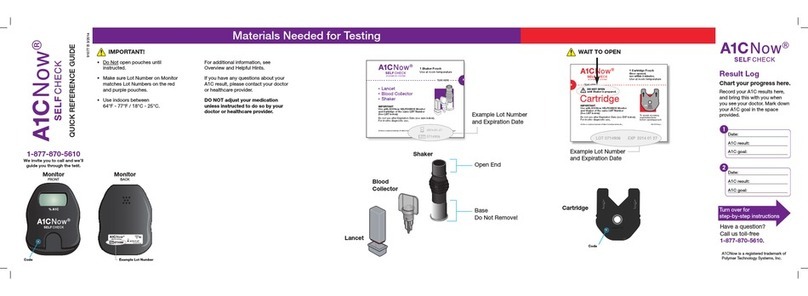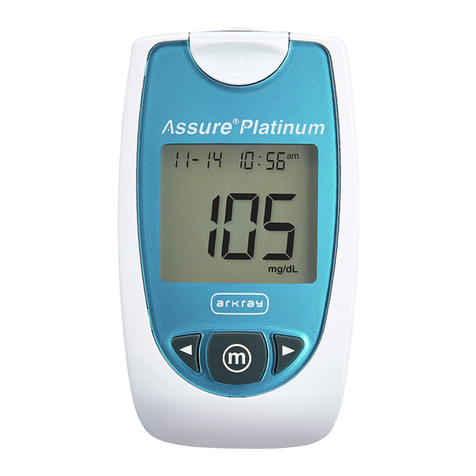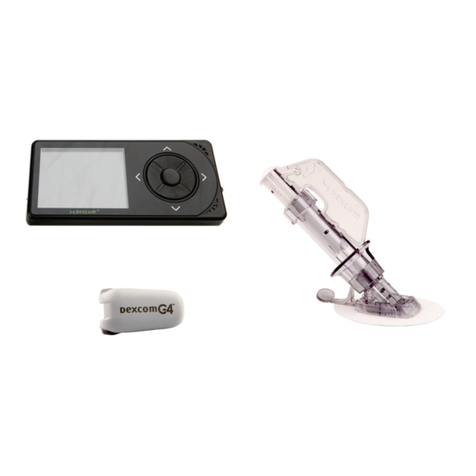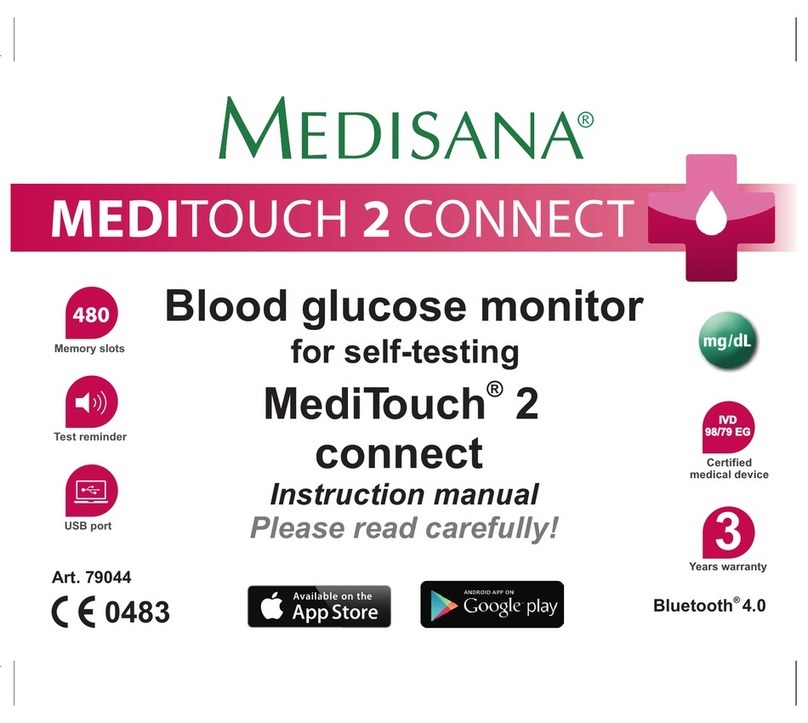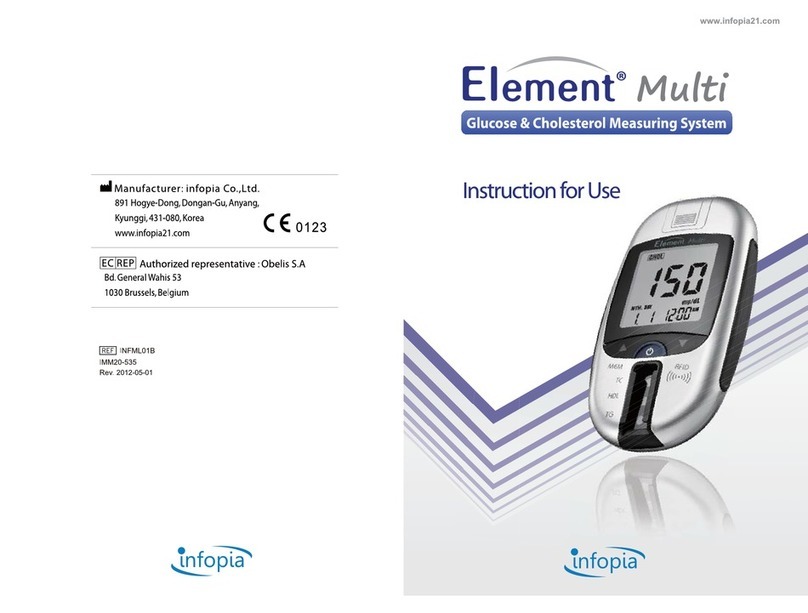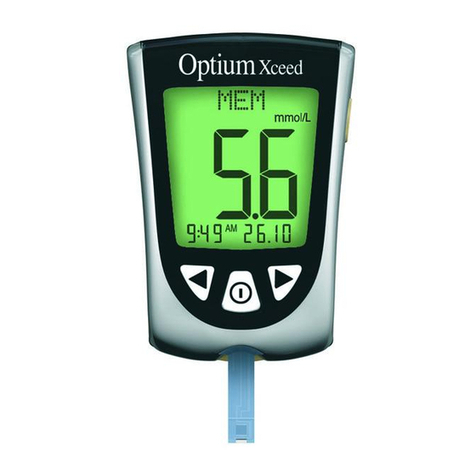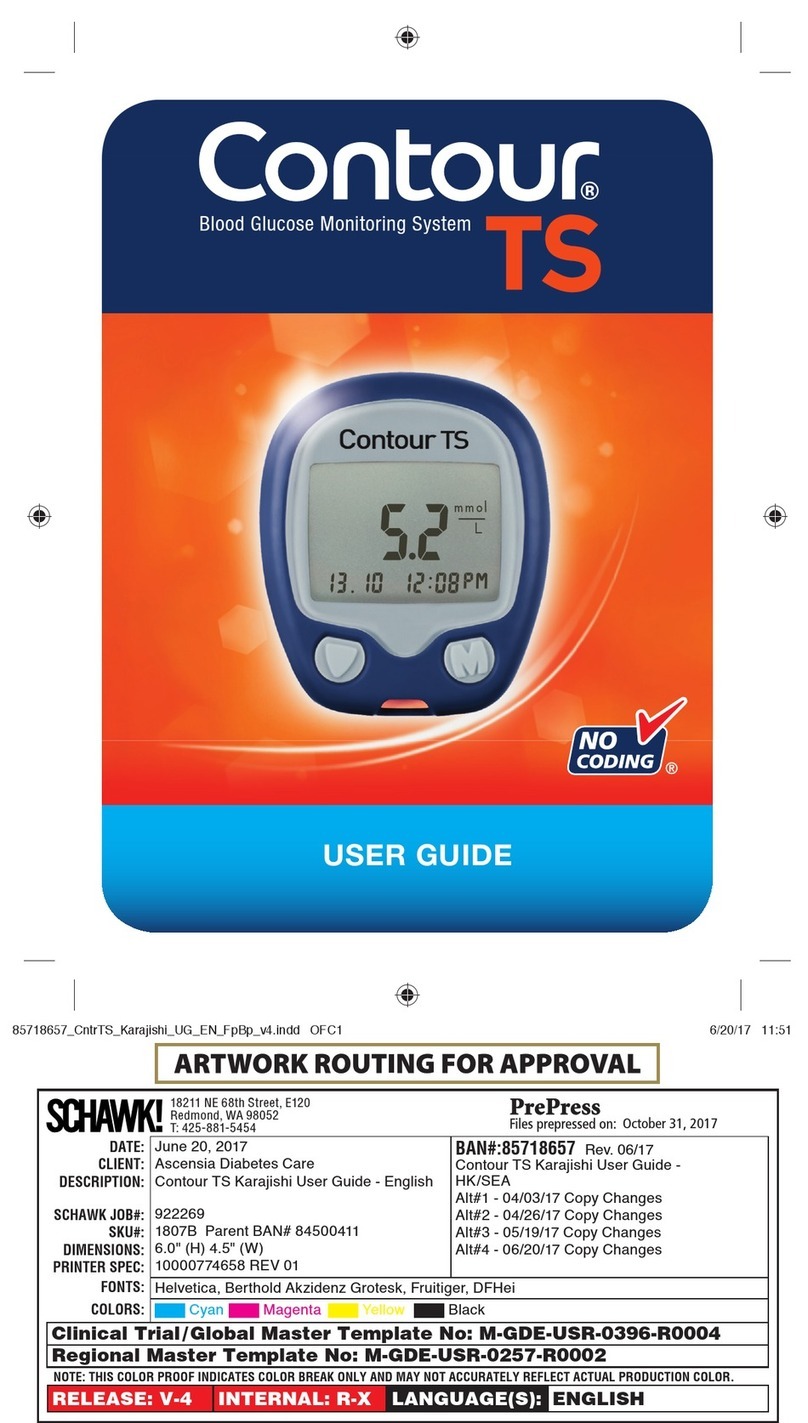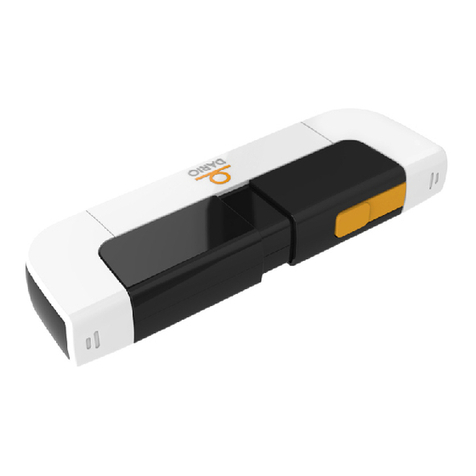i
Blood Glucose & Ketone Monitoring System
Self monitoring of blood glucose is an integral part of diabetes care, but the high
cost of testing can make this impossible. At ACON, our goal is to provide high
quality glucose monitoring at a price that allows you to test as often as necessary.
Together, we can better manage your diabetes and help you live a longer and
healthier life.
Welcome, and thank you for choosing the On Call®GK Dual Blood Glucose &
Ketone Monitoring System. The On Call®GK Dual Blood Glucose & Ketone
Monitoring System will give you accurate blood glucose or β-ketone
(β-hydroxybutyrate) results from fresh whole blood samples in just a few simple
steps.
To ensure accurate results from your On Call®GK Dual Blood Glucose & Ketone
Monitoring System, please follow these guidelines:
•Read instructions before use.
•Use the code chip that accompanies each box of test strips.
•Use only On Call®Advanced Blood Glucose Test Strips or On Call®Chosen
Blood Glucose Test Strips with the On Call®GK Dual Blood Glucose & Ketone
Meter to test your blood glucose concentration.
•Use only On Call®Blood Ketone Test Strips with the On Call®GK Dual Blood
Glucose & Ketone Meter to test your blood β-ketone concentration.
•For in vitro diagnostic use only. Your blood glucose & ketone monitoring
system is to be used only outside the body for monitoring the effectiveness of
diabetes control. It should not be used for the diagnosis of diabetes or diabetic
ketoacidosis (DKA).
•For self-testing and professional use. For professional use, wear gloves to
avoid contact with potentially hazardous biological specimens during testing.
•Test only whole blood samples with the On Call®GK Dual Blood Glucose &
